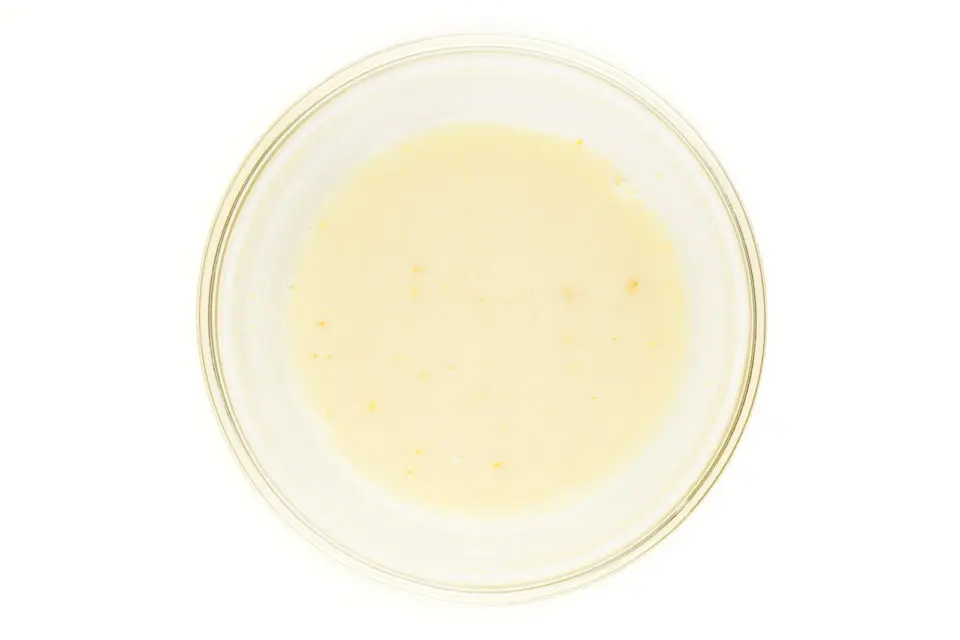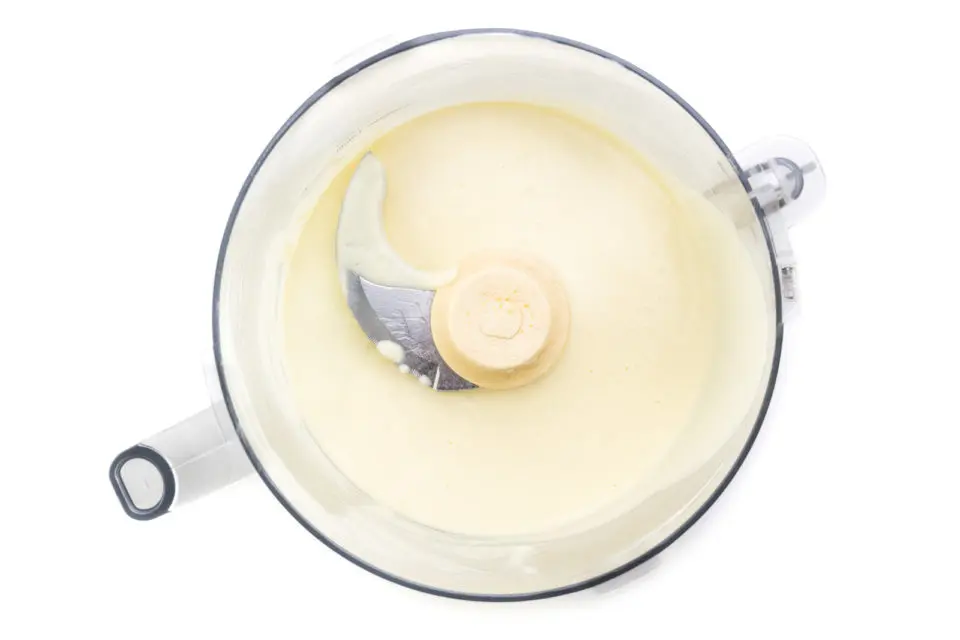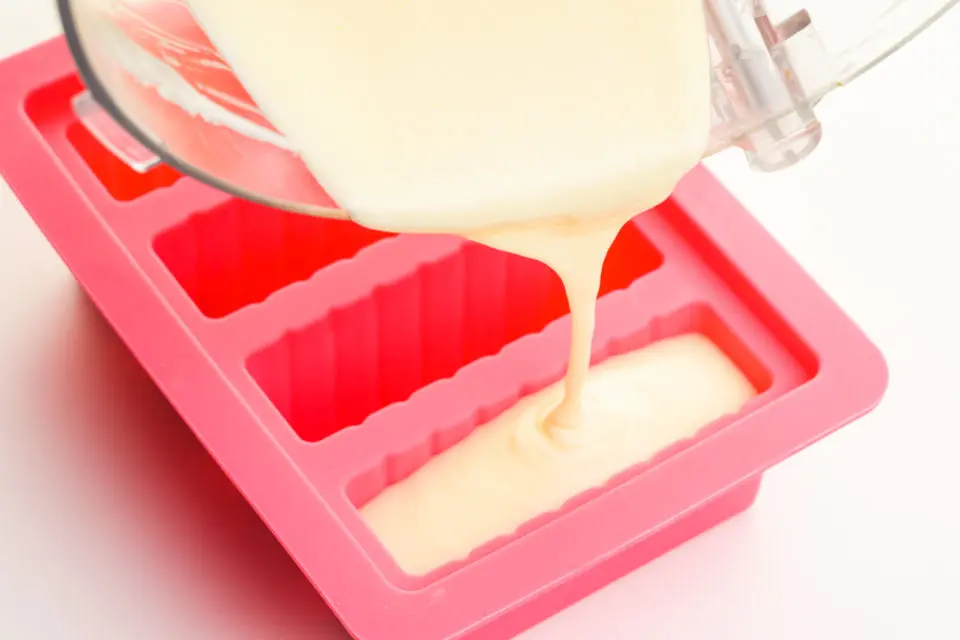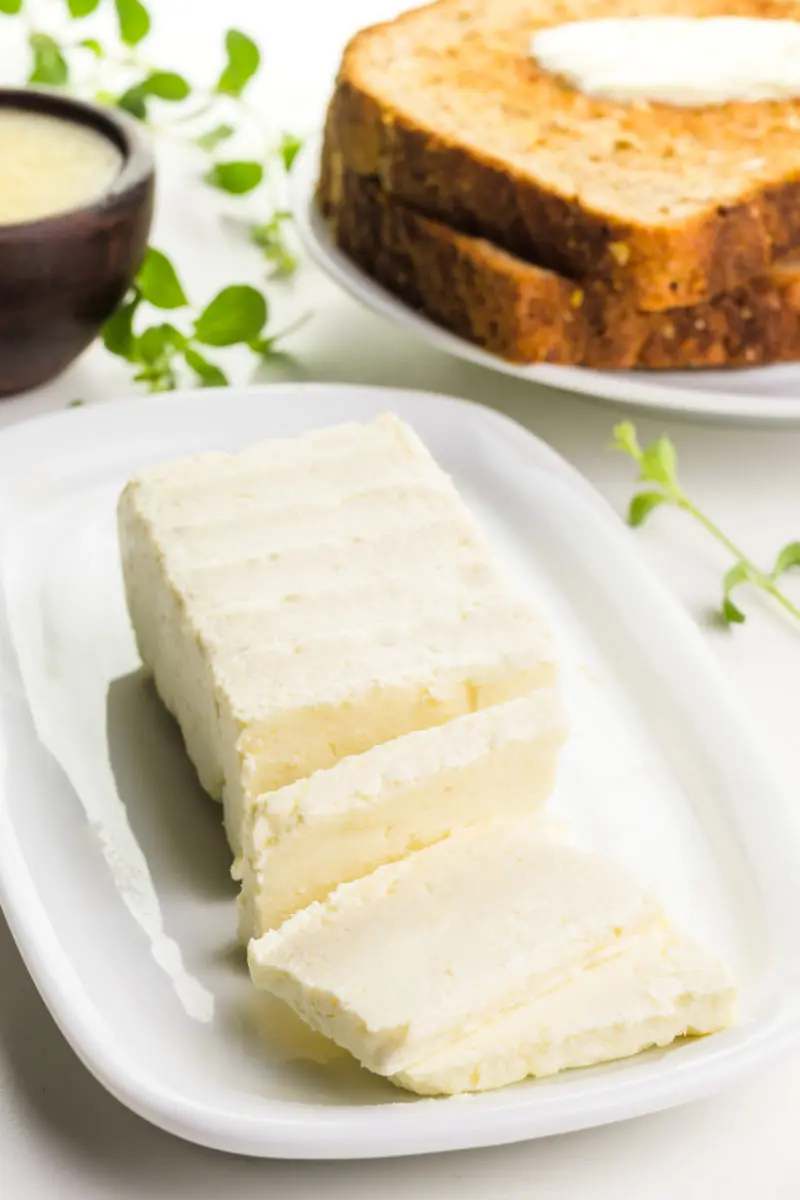Vegan Butter
Make your own creamy vegan butter recipe to use on toast or even in your favorite recipes, like cookies. This smooth homemade butter is made with 8 ingredients and takes only a few minutes of your time.
Serve this on vegan mashed potatoes or on a slice of vegan pumpkin bread.

I’m so excited to share with you the best vegan butter recipe! Of course, you can buy plant-based butter in stores, but making your own is easy that you’ll want to do this time and time again. It’s just one more step in my plan to be a little more like Martha. Maybe I’m a vegan Martha? I like that.
There are so many ways you can use your own homemade butter, such as serving it on a warm Cinnamon Muffin or over Vegan Blueberry Pancakes. I love a pat of butter melting over my Whole Wheat Waffles, too.
Why This Recipe is a Winner
- Curdling the soy milk adds depth of tangy flavors very similar to regular butter
- Adding a pinch of nutritional yeast flakes adds both flavor and a bit of yellow color
- Using refined coconut oil adds the rich fat necessary for good butter, but because it’s refined, you won’t have the coconut flavor.
Key Ingredients
You can find the full printable recipe, including ingredient quantities, below. But first, here are some explanations of ingredients and steps to help you make this recipe perfect every time.
Here are the ingredients you’ll need for this recipe:
- Soy milk — I do not recommend substituting another plant-based milk, because soy milk has a higher protein content, it works best for this recipe.
- Apple cider vinegar — I do not recommend replacements because apple cider vinegar has both malic and acetic acids. This combination interacts with the protein in the soy milk, causing it to curdle and create the best flavor and chemical reaction to add buttery flavor
- Salt — We’ll add a complexity of flavor by adding a little bit of salt
- Coconut oil — You must use refined coconut oil or otherwise your butter will taste like coconut
- Olive oil
- Nutritional yeast flakes
- Soy lecithin — We’ll use this lecithin as an emulsifier, binding the oil ingredients to and water ingredients.
- Xanthan gum — This is a chemical created from fermenting vegetables. That doesn’t sound enticing but the powder that is created from it, called xanthan gum, is an emulsifier and a stabilizer. I have used it in my vegan meringue for its stabilizing effect. If you’re opposed to using xanthan gum, you can leave it out, but the resulting butter will not be suitable for things like making cookies or pastries.
How to Make Vegan Butter
Now that you’ve got your ingredients together, it’s time to make this recipe. You’ll be surprised at how easy it is.
- Combine the soy milk, apple cider vinegar, and salt in a small bowl. Stir this together and then set aside for at least 10 minutes.
- Place the coconut oil in a microwave-safe dish. Cook it for one minute at 40% power. The goal is to soften the coconut oil to the point of melting, without it getting hot.
- Transfer the melted oil to a food processor along with the olive oil, nutritional yeast flakes; room temperature curdled soy milk, lecithin, and xanthan gum. Give this a few quick pulses, then use a rubber spatula to push ingredients from the sides of the container and the lid. Pulse again, for up to 2 minutes, stopping to scrape the sides at least once in the middle.
- Transfer this mixture to a butter mold or other silicone mold. Then cover and place in the freezer for 20 minutes. It should be ready for use after that.
- Store vegan butter in an airtight container in the fridge for up to 1 month. It can also be frozen for up to 6 months.
Here’s the step-by-step process on how to make vegan butter:
Step One: Curdle the Soy Milk
I’ve talked about vegan buttermilk before, and this recipe is a variation on that. It’s a different ratio of acid to milk, but it’s all for a good reason. You may not realize this when you eat dairy butter, but there is a tangy flavor. We’ll recreate that by curdling the soy milk.

To do this, combine the soy milk with the apple cider vinegar and salt. Stir this together and set it aside for at least 10 minutes. At a minimum, you don’t want the milk to be cold when you add it to the other ingredients.
But to maximize the flavor of the curdling process, letting this milk sit for 10 minutes (or even longer) works.
Step Two: Melt the Coconut Oil
Measure out the coconut oil into a microwave-safe bowl. The goal here is to melt the coconut oil, but not to the point that it’s hot. So, you can do this by cooking it for one minute at 30 to 40% power. Once it’s melted, pour it into a food processor along with the olive oil, nutritional yeast flakes, lecithin, and xanthan gum.
Once your milk has soured enough (and is room temperature), pour it into the food processor as well.
Step Three: Churn the Butter
Pulse the food processor a few times, and then use a spatula to scrape down the sides of the bowl and the lid. Then process the butter for up to 2 minutes, scraping down the sides of the bowl at least one more time in the middle.

Step Four: Transfer to a Mold
I recommend a silicone mold, but you can choose a variety of shapes. I prefer the molds specifically designed for butter.

Use a rubber spatula to transfer the butter mixture into the mold. The sooner you do this step the better because the liquidy butter will begin to solidify. Place the lid on the mold and place it in the freezer for about 20 minutes.
Your plant-based butter will be ready to use after that.

Ways to Use Vegan Butter
This is a complete butter substitute, meaning you can use it just like you would dairy butter. Whether you’re making cookies or frosting or simply buttering your vegan garlic bread, this recipe will work.
I think it’s empowering to make your own vegan butter at home. Adding my vegan butter to vegan chocolate chip cookies or my vegan cream cheese frosting is very fulfilling!
Vegan butter is firm when it first comes out of the fridge. Like dairy butter, it’s not as spreadable over a piece of soft bread. Let it sit out for a few minutes, and it will soften.
Making Tub Butter
You can make your butter more spreadable like the stuff sold in tubs by reducing the coconut oil by two tablespoons. I found this gave the butter an almost whipped-like consistency.
Please note, you’ll need to push it down in the mold, but you’ll be pleased with the results.

Storage Tips
Store vegan butter in an airtight container in the fridge for up to 1 month. It can also be frozen for up to 6 months.
Frequently-Asked Questions
What is vegan butter made of?
Vegan butter is made from plant-based milk and other ingredients. It offers a texture, flavor, and mouthfeel similar to dairy butter which is made from cow’s milk, or the milk of some other herding mammal-like goats. Dairy-free butter is served on toast, pancakes, and can be used just like dairy butter in baking and other recipes.
What is the best vegan butter?
Earth Balance has been a popular dairy-free butter option. However, there are many more options in stores these days, such as Miyoko’s, Wildbrine, Forager, and more. The best vegan butter is the one that is most accessible to you, whether it’s store-bought or homemade.
What do vegans use for butter?
You can substitute vegetable oils in place of butter in many recipes. For example, olive oil is a great substitute for mashed potatoes. You can also use vegetable oils in a cake. However, using a store-bought or homemade dairy-free butter is another great option.

Vegan Butter
Ingredients
- ⅓ cup soy milk
- 1 teaspoon apple cider vinegar
- ¼ teaspoon salt
- 10 tablespoons refined coconut oil
- 1 tablespoon olive oil
- ½ teaspoon nutritional yeast flakes
- 1 teaspoon soy lecithin
- ¼ teaspoon xanthan gum
Instructions
- Combine the soy milk, apple cider vinegar, and salt in a small bowl. Stir this together and then set aside for at least 10 minutes.
- Place the coconut oil in a microwave-safe dish. Cook it for one minute at 40% power. The goal is to soften the coconut oil to the point of melting, without it getting hot.
- Transfer the melted oil to a food processor along with the olive oil, nutritional yeast flakes; room temperature curdled soy milk, lecithin, and xanthan gum. Give this a few quick pulses, then use a rubber spatula to push ingredients from the sides of the container and the lid. Pulse again, for up to 2 minutes, stopping to scrape the sides at least once in the middle.
- Transfer this mixture to a butter mold or other silicone mold. Then cover and place in the freezer for 20 minutes. It should be ready for use after that.
- Store vegan butter in an airtight container in the fridge for up to 1 month. It can also be frozen for up to 6 months.
Recommended Equipment
(The products above contain sponsored links to products we use and recommend)
Notes
The nutrition information shown is an estimate provided by an online nutrition calculator and should not be considered a substitute for a professional nutritionist’s advice.
This post was originally published in 2020 and was updated to include new photos, new text, and an updated recipe in 2021.




Is there another oil I can substitute for coconut oil? I can’t have coconut. Can I substitute guar gun for the xanthan gum? I’m allergic to corn.
Can you have cashews?
Hello! Can Sunflower Lecithin be used instead of Soy? Thanks Cynthia
Hi Cynthia. Yes, sunflower lecithin and soy lecithin are 1:1 substitutions. Great question!
Will it work with oat milk? I can’t do soy.
Hi Jennifer. I haven’t tested this recipe with oat milk, but I think it should work.
The lecithin I have it sticky and some stuck to the bottom. Any tips to prevent?
Hi Chad. I haven’t had this problem with lecithin, but I have read it can get sticky. You could try adding a bit of water to a portion of the lecithin to help thin it out. Then portion out how much you need for the vegan butter and proceed with churning. I hope this is helpful!
Thanks for this butter recipe. I love having it for when I run out!
Wooh! Finally, a vegan butter for all the dishes I make! Yay! Thank you for this amazing recipe, Marly!
You’re welcome, Mina!